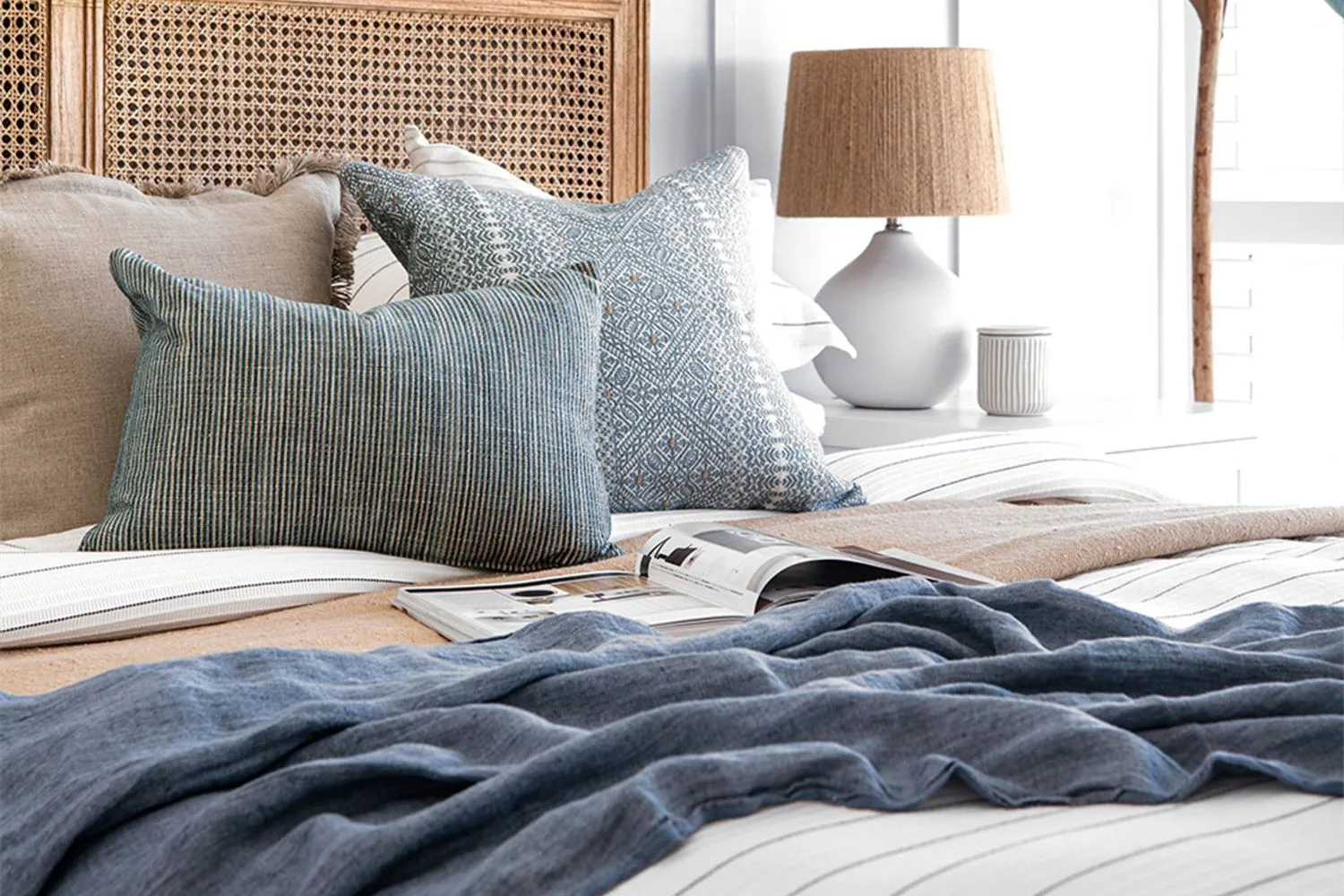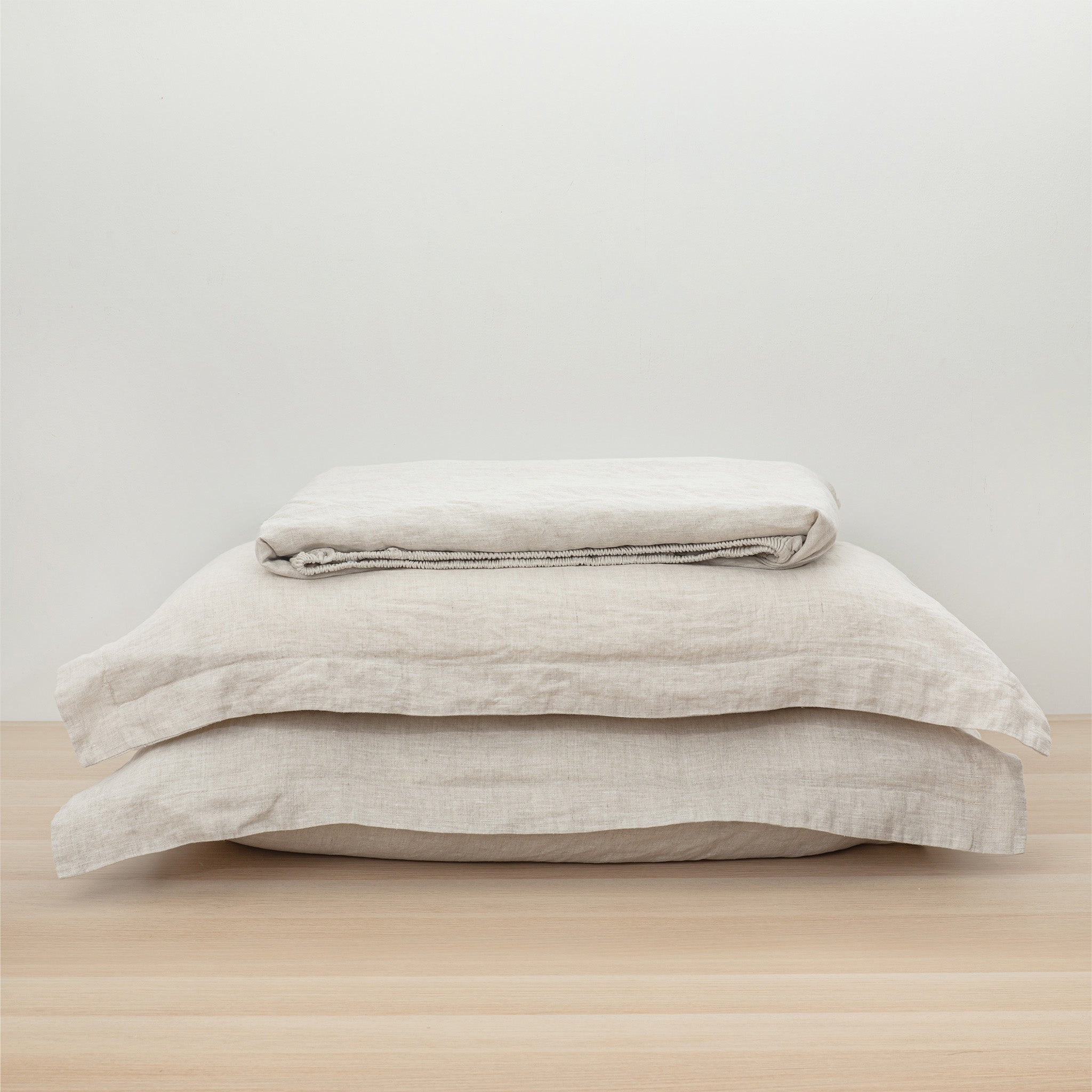How Linen Australia Supports Eco-Friendly Wardrobe Goals
Wiki Article
Understanding Linen: The Eco-Friendly Choice for Comfortable Living
When you think of environment-friendly materials, linen typically sticks out for its unique top qualities. This all-natural fabric, made from the flax plant, offers both convenience and sustainability. Its amazing buildings make it an ideal selection for warm climate and long-lasting usage. What absolutely establishes bed linen apart from various other materials? Comprehending its benefits and beginnings can change exactly how you see home textiles. Allow's discover the interesting globe of linen additionally.The Origins of Linen: From Flax to Textile

Linen, one of the oldest textiles recognized to mankind, has a fascinating trip that begins with the simple flax plant. When harvested, the flax stalks undertake a process called retting, where they're soaked to separate the fibers from the woody parts.
When you see linen textile, you're experiencing centuries of craftsmanship. The weaving process changes those spindles of thread into the lovely, resilient fabric you love. Bed linen has been valued for its all-natural appearance and feel, making it a favored for everything from garments to home fabrics. Following time you touch linen, remember its abundant background that links you to old societies and their standard techniques.
The Special Feature of Linen
Among the standout features of this remarkable material is its breathability. When you use linen, you'll see just how it permits air to circulate, keeping you cool down on warm days. This property makes it a best option for summer season clothing and bed linens.Linen likewise boasts outstanding moisture-wicking capabilities, drawing sweat away from your skin and permitting it to vaporize promptly. You will not really feel clammy, even in humid problems. Additionally, linen is long lasting, usually ending up being softer and extra comfortable with each laundry, which indicates it can stand the examination of time in your closet.
Another unique aspect is its all-natural structure; the minor irregularities give linen a personality that enhances your design. Plus, it stands up to creases much better than many other fabrics, so you can enjoy a relaxed yet polished look without much effort. Accept linen, and you'll value its convenience and unique beauty.
Ecological Benefits of Bed Linen
When you select linen, you're not simply choosing for a lovely textile; you're also supporting sustainable manufacturing practices. Bed linen's naturally degradable and compostable nature makes it a clever option for the setting. Plus, it calls for substantially less water to produce contrasted to other textiles, assisting conserve this precious source.Lasting Production Practices
Although many fabrics have substantial environmental influences, bed linen stands out due to its sustainable manufacturing practices. When you choose linen, you're choosing for a textile made from the flax plant, which calls for marginal water and chemicals.Bed linen manufacturing is frequently less energy-intensive compared to other fabrics, as it involves all-natural procedures as opposed to synthetic therapies. By supporting linen, you're contributing to a more lasting fabric industry that focuses on environment-friendly practices. Picking bed linen not only boosts your convenience yet additionally straightens your values with environmental duty.
Eco-friendly and Compostable Product
Bed linen's environment-friendly nature extends beyond its lasting manufacturing; it's compostable and also eco-friendly, making it a superb option for environmentally conscious customers. When you select bed linen products, you're opting for products that damage down naturally, returning nutrients to the earth. This suggests that at the end of their life cycle, your bed linen items will not add to garbage dump waste. Rather, they can disintegrate securely, lowering your environmental impact. Composting linen can enrich soil, promoting healthy and balanced plant growth. By incorporating linen into your home, you're not just enjoying its comfort and sturdiness; you're also helping and supporting environment-friendly practices develop a healthier planet. Welcome linen, and really feel excellent about your options for the environment.Low Water Usage
One of the standout advantages of bed linen is its low water usage during growing. Unlike cotton, which calls for significant irrigation, bed linen's flax plant grows on marginal water, making it a much more lasting choice. You'll value understanding that for every ton of linen created, considerably less water is needed compared to numerous various other textiles.Bed linen vs. Various Other Fabrics: A Contrast
When you compare bed linen to various other textiles, you'll observe its remarkable breathability and comfort, making it ideal for warm weather condition. And also, linen attracts attention for its sturdiness and long life, usually outlasting lots of typically made use of products. As you consider your selections, the environmental impact of each fabric will also play an essential role in your choice.Breathability and Convenience
Linen stands out amongst materials for its remarkable ability to allow air flow. Unlike synthetic materials, which can catch warm and dampness, linen's all-natural fibers wick away sweat, keeping you dry and cool.Cotton is often applauded for its gentleness, but it doesn't match bed linen's breathability. If you prioritize convenience, especially in summertime, linen should be your go-to choice.
Longevity and Long Life
While numerous materials use differing levels of longevity, linen really excels in durability, making it a smart financial investment for your closet. Unlike cotton Continued or artificial products that may wear out rapidly, bed linen obtains more powerful with each laundry. You'll discover that linen's breathable nature also reduces wear from sweat and moisture, which can harm various other fabrics.Environmental Impact Comparison
Although lots of textiles add to environmental issues, linen sticks out for its green qualities. Unlike cotton, which calls for enormous water sources and chemicals, linen is made from flax, a plant that flourishes on very little water and needs less chemicals. This implies you can feel good about your selection while lowering your carbon impact.When compared to synthetic materials like polyester, linen's biodegradability shines. While polyester can take centuries to decompose, linen breaks down naturally, returning nutrients to the dirt.
Choosing linen not just promotes sustainable farming practices yet also supports a much healthier world. By going with linen over standard materials, you're making a conscious choice that profits both your convenience and the environment.
Taking care of Your Linen Textiles
To guarantee your linen fabrics stay in terrific condition, you'll intend to follow some simple treatment standards. First, clean your linen in cold water on a mild cycle to avoid it from diminishing or shedding its shape. Prevent using bleach, as it can harm the fibers. Instead, go with a moderate cleaning agent that's devoid of rough chemicals.When it concerns drying, air drying out is best. If you use a dryer, pick a reduced warmth setup and remove the items while they're still somewhat damp to lessen wrinkles. Iron the linen while it's still damp for less complicated handling, or heavy steam it to maintain it looking crisp.
For storage, keep your bed linen in a cool, dry location. Stay clear of straight sunshine to stop fading. With these simple practices, your bed linen textiles will preserve their appeal and last for many years, making them a sustainable addition to your way of living.
Incorporating Bed Linen Into Your Home Design
Caring for your linen textiles not only protects their quality however additionally opens a world of possibilities for incorporating them right into your home style. You can start tiny by adding linen throw pillows to your sofa, immediately elevating the space with appearance and warmth. Consider linen curtains that filter sunshine wonderfully, creating a soft, ventilated ambience in any type of room.For an extra rustic appearance, try using bed linen table linens or joggers during meals; they include a stylish touch and are simple to tidy. If you're feeling adventurous, mix and suit various bed linen colors and patterns to produce an unique, layered effect.
Don't fail to remember regarding bed linen coverings-- curtain one over a chair or your click to read more bed for a welcoming feeling. By attentively integrating linen right into your decoration, you improve both convenience and design, making your home a serene retreat.
The Future of Bed Linen in Sustainable Living
As customers increasingly prioritize sustainability, linen arises as a frontrunner in environmentally friendly textiles. Its production uses less water and pesticides compared to conventional cotton, making it a more environmentally accountable choice. As you look towards a lasting future, incorporating bed linen into your wardrobe and home can significantly lower your carbon footprint.Ingenious brands are now concentrating on lasting practices, from utilizing organic flax to implementing round economic situation concepts. You'll find that bed linen's sturdiness indicates it lasts much longer, reducing the requirement for constant replacements.
In addition, as even more people welcome minimalist way of livings, linen's ageless charm and versatility will certainly maintain it relevant. By selecting linen, you're not simply going with comfort; you're additionally supporting sustainable techniques.
In the upcoming years, the demand for bed linen is expected to grow, solidifying its place in a much more eco-conscious world. So, consider making bed linen a staple in your sustainable living trip.
Frequently Asked Inquiries
Is Bed Linen Suitable for Individuals With Allergies?
Yes, bed linen's all-natural fibers are hypoallergenic, making it ideal for people with allergies. Its breathable nature aids reduce moisture and bacteria accumulation, adding to a healthier sleeping atmosphere. You'll likely find it comfortable and safe.Can Linen Be Dyed Easily?
Yes, you can dye bed linen quickly. Its natural fibers absorb dyes well, enabling vibrant colors. Just make sure you use the right color kind and comply with appropriate techniques to achieve the desired outcomes without damaging the textile.Exactly How Does Linen Compare in Sturdiness to Cotton?

What Weight of Bed Linen Is Best for Summer Season Clothing?
For summertime clothing, lightweight linen around 4 to 5 ounces per lawn is excellent. It keeps you trendy, breathable, and comfortable in hot weather condition (Linen). You'll value how it drapes and steps with you easily
Can Linen Be Utilized for Outdoor Furnishings?
Yes, you can use linen for outside furniture. It's durable and breathable, making it a terrific choice for cozy weather condition. Just be sure to pick a dealt with version to stand up to the elements and preserve its appearance.Verdict
Incorporating linen into your life not only improves your comfort but likewise supports a more lasting future. By choosing this green material, you're making an aware choice that profits both your well-being and the earth. With its distinct properties and minimal environmental effect, linen is a wise option for your home design and lifestyle. Embrace bed linen, and enjoy the excellent blend of style, longevity, and sustainability in your day-to-day living.Linen's compostable and biodegradable nature makes it a smart option for the environment. By incorporating linen into your home, you're not simply enjoying its comfort and toughness; you're additionally sustaining green practices and assisting create a healthier world. The Future of Bed Linen in Sustainable Living.

Report this wiki page